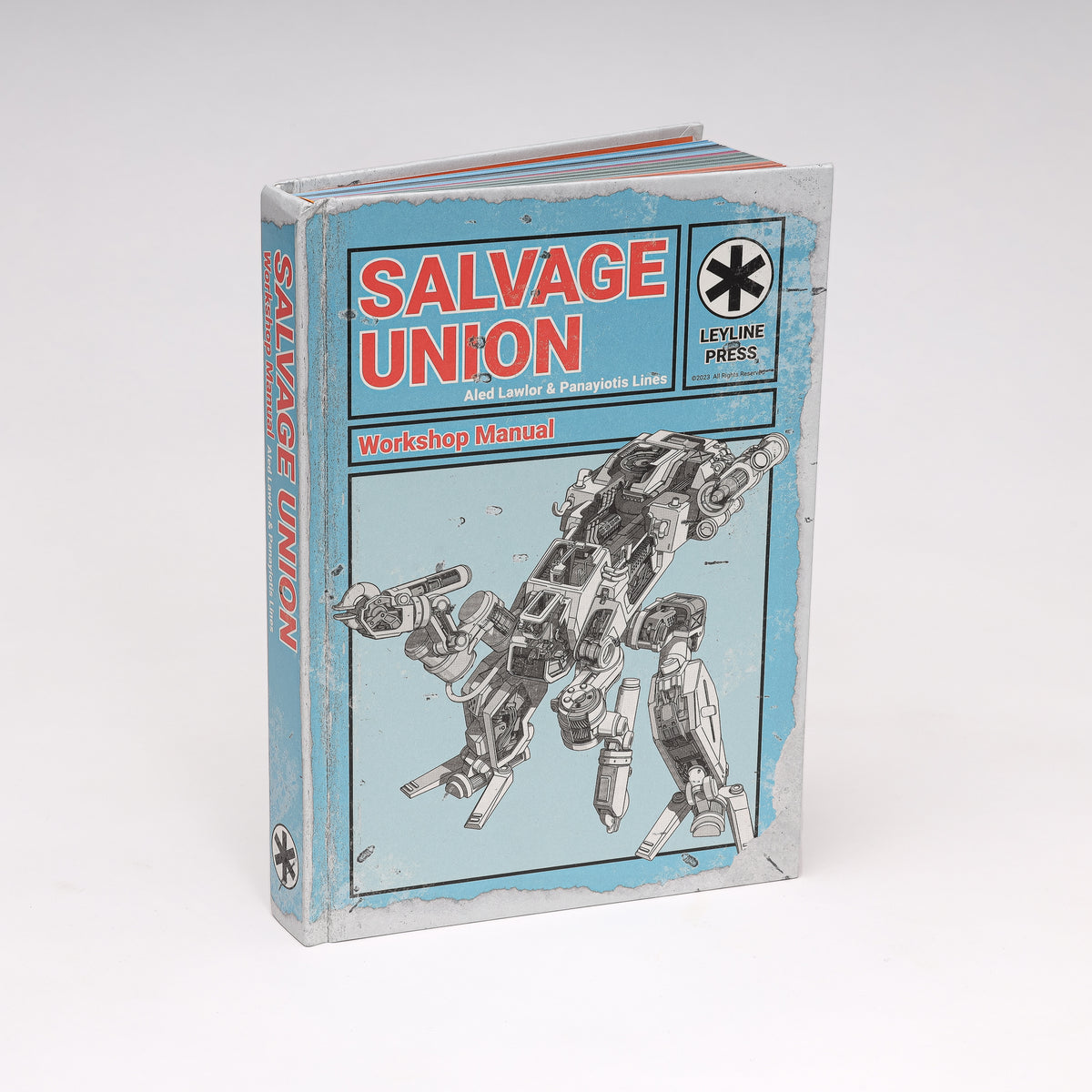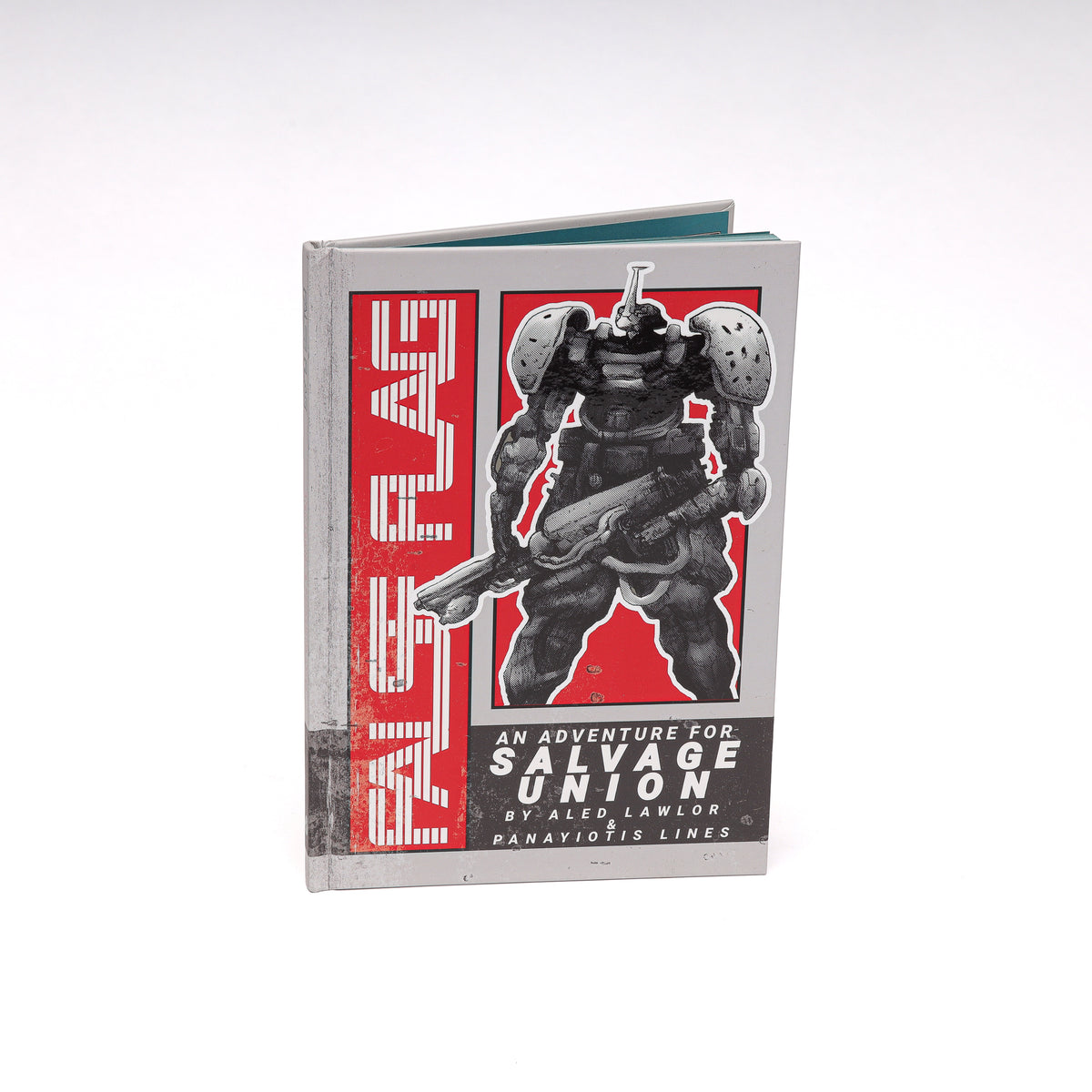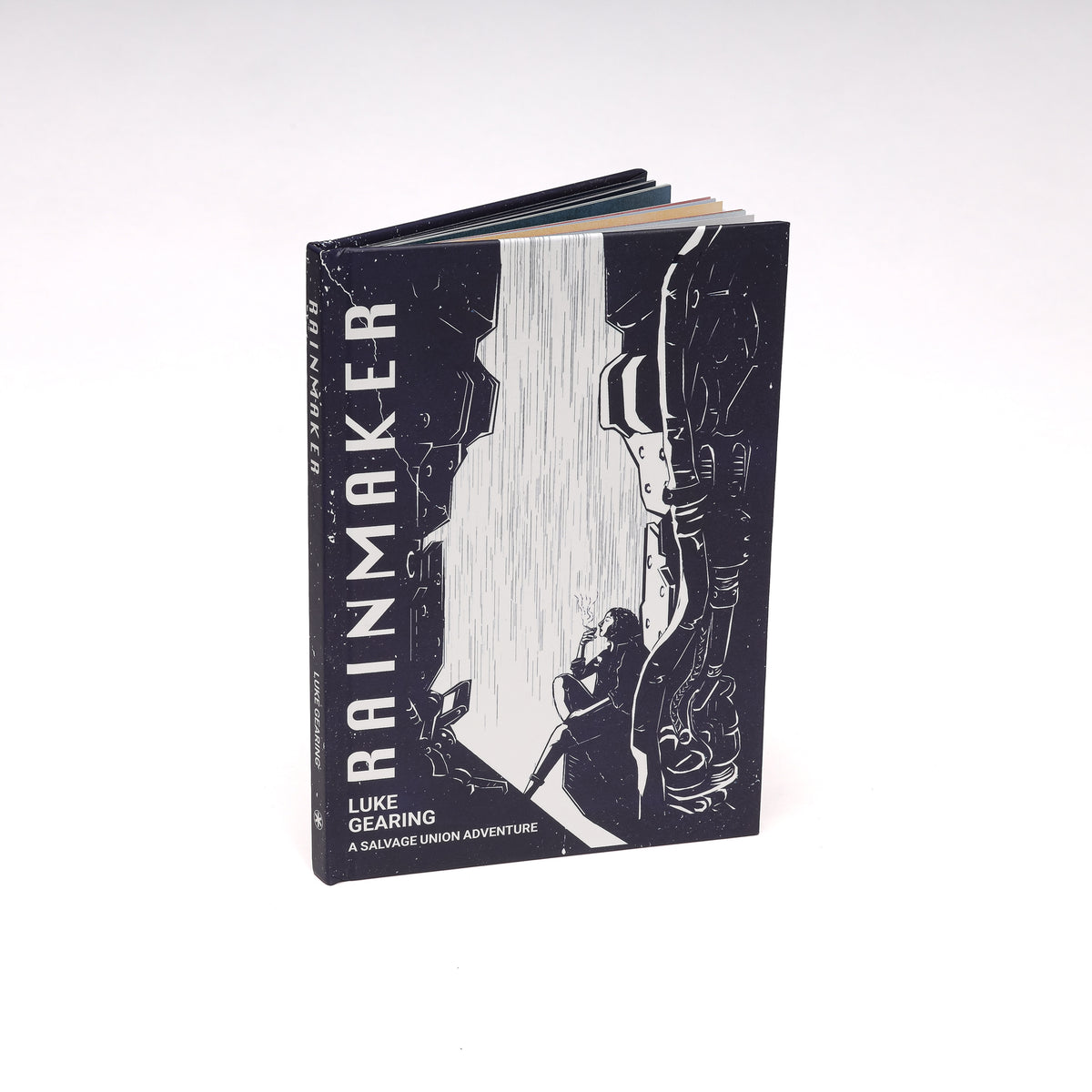Swords & Wizardry (S&W) by Frog God Games is ostensibly a retroclone of Original Dungeons & Dragons. However unlike retroclones such as Old School Essentials it does not attempt to be faithful towards the original system. Instead it both considerably cleans up the original OD&D rules whilst adding various additions of its own. Some of these gleaned from the writers own imagination as well as the long, varied history of Dungeons and Dragons.
It's worth keeping in mind that Original Dungeons & Dragons was not a complete system, it was intended as a toolkit that players would utilise and fill in the gaps with and required knowledge of other systems such as Chainmail to work. As a result creating a truly faithful retroclone of OD&D would be a tricky task. The approach S&W takes is a wise one that allows you to actually play the game 'out of the box' whilst still feeling true to the original D&D experience.

Much as with many retroclones S&W has everything you need to play in one volume including rules for character creation, combat, guidance on wilderness and dungeon adventures, monsters, treasure and even rules for mass combat and sieges. Many of these rules categories could be found within Original D&D in one sense or another but S&W combines everything into one clear volume to use at the table.
Character creation is the classic 3d6 down the line with the famous six D&D statistics (Strength, Dexterity, Constitution, Wisdom, Intelligence and Charisma.) However one of the core differences between S&W is that it uses a much smaller range of character stat bonuses mirroring the original D&D values rather than those from the later Basic line.

S&W Dexterity Table
A 3-8 provides a -1, a 9-12 a +0 and a 13-18 a +1. This contrasts with the much wider range of -3 to +3 found within Basic & Expert. As a result ability scores provide even less benefit in S&W, you do still get bonuses to XP from the Prime Requisite of your class and there's a few minor benefits for having higher stats such as Clerics gaining an additional first-level spell if they have a Wisdom of 15. This rule in particular being an addition by the authors as it was not present in OD&D. For the most part however importance of stats is sparse but that ultimately fits the 'OSR' style of play.

Dexterity Table Moldvay Basic D&D
More relevant is your class choice. Within S&W there's the core classes of Fighter, Cleric, Magic User and the Thief. The Fighting-Men class from OD&D has been given the more modern name of Fighter and the Thief from the Greyhawk supplement is included.
There's further 4 playable races in S&W though this works somewhat differently to how races work in modern editions of the game. These are the Elf, Dwarf, Halfling and Half-Elf. The first 3 were in OD&D and the Half-Elf appeared in the OD&D Greyhawk Supplement.

You can choose these race options based off of what class you pick. This is similar to how it worked in Original D&D. The Elf, Hobbit (changed to Halfling to avoid being sued by the Tolkein estate) and Dwarf in OD&D were options you could take if you picked the Fighting-Men Class. You could also choose Elf if you picked the Magic User Class.
In a way they were almost like a subclass that conferred additional benefits and penalties. For example in OD&D a Dwarf can only ever be from a Fighting class and can only advance to 6th level, they also get a bonus to saves against magic and are the only class able to wield a +3 Warhammer. This is a rather idiosyncratic and specific benefit. S&W follows a similar line though a Dwarf can also be from a Thief class and alas the +3 Warhammer ability has been removed.
Basic & Expert, of which retroclones like OSE derives, would streamline this process by making the various races a class option instead with differences like bonuses to saves or differences to THAC0 factored into their respective class category. Whilst AD&D would initiate the race/class split that D&D still follows to this day. In this case each race would have a different set of listed abilities and you could mix and match them with your various class options albeit with some restrictions.

S&W has numerous rules changes like this, they're almost what you'd remember but in practice work differently, with some additional options added and to be fair a lot more smoothly and simply than they did in OD&D.
Another one of these rules is the Fighters ability to make a number of attacks each round equal to their level against creatures of 1 HD or less. This is an extrapolation of a similar rule in OD&D but simplified within S&W. This rule happens to be rather powerful and makes the S&W Fighter, and by extension the OD&D Fighting-Men a lot more powerful than that found in Basic & Expert. Dare we say even heroic in their ability to cut down multiple foes in a round as they level compared to the Basic & Expert Fighter who merely gets an increase in attack bonus/THAC0 as they progress.
Beyond the core classes there's numerous additional classes added from the games history that were never in OD&D including the Assassin, Monk, Paladin
,Ranger and Druid. These are all classes which you can start playing at level 1 and come with a plethora of abilities such as the Assassin’s disguise ability and the Druid’s access to a unique spell list. These classes can seem a lot more powerful than the 'core' classes however ability score requirement minimums are given as suggestions to play them so that only those who roll well can opt to play them.

There’s further rules for playing multi-classed characters allowing you to build a Fighter/Magic-User or Fighter/Thief but with various limitations as well. This was implied in OD&D as a possibility and S&W provides clearer rules for doing so.
There’s no ‘core’ mechanic within S&W much as with OD&D and many other retroclones. There’s instead a mix of ways to resolve different things and plenty of nudges to the referee to adjudicate things how they desire as well. For example the Assassin’s disguise ability uses a percentile system, whilst attack rolls and saves use a D20 roll. THAC0 charts are the main method for calculating combat attack rolls however S&W uses a updated version of this compared to the base OD&D rules which themselves extrapolated from Chainmail. There's also options for Ascending AC added to the rules much as they are in Old School Essentials.
In Original D&D all weapons dealt d6 damage, albeit with a smattering of modifiers depending on weapon type. S&W includes variable damage, much as Old School Essentials does as it's one of the more popular and familiar additions to the D&D rules set.

Numerous combat procedure rules are given within S&W. The section notes that OD&D contained little in the way of combat procedure and then includes its own author interpreted variant of the sequence as well as that found in Holmes Basic.
Death occurs at any value below 0 in S&W. This differs from Original D&D and Basic & Expert where death was at 0 exactly.
Magic uses the Vancian system where casters memorise spells, then cast them and promptly forget about them until they prepare them again, with Clerics being able to prepare spells from their entire list whilst Magic-Users prepare them in their spellbook. The spells themselves are for the most part identical to those in Original D&D however some have been cleaned up and some new spells have been added such as Delayed Blast Fireball. Likewise whole new spell lists have been added the new classes in S&W such as the Druid.

S&W simplifies the array of five saving throws present in Original D&D as well as subsequently AD&D and the Basic lines into a singular saving throw. This is attached to a class and there's some circumstantial modifiers to add when appropriate to emulate the different ranges and bonuses each class had, for example Magic Users in S&W gains a +2 to saves against spells. This is arguably a simpler way of doing it than the array of five saves however one does have to remember when their circumstantial modifiers apply rather than just being able to roll.
S&W also includes its own condensed version of the original saving throw chart as an alternative rule which includes its additional classes.
Original D&D Saving Throw Chart

Swords & Wizardry Saving Throw Chart
Encumbrance in S&W is calculated in pounds rather than coin weight, with carrying more slowing you down however coins still weigh 1/10 of a pound mirroring the logic of coin weight. Progression ties into this with each gold piece found granting 1 experience point in addition to monsters slain granting XP. Class experience progression mirrors that of OD&D but with additional values added for all the new classes in S&W.
S&W includes a large list of monster stat blocks and encounter tables split into various locales. Many of these appeared in OD&D such as the likes of Red, Blue and Green Dragons however some are additions from later editions and supplements such as the Bulette and Demonic Vrock. As an aside Tim Kask, the first official TSR employee and former editor of Dragon Magazine, who invented the Bulette writes a forward to S&W giving it the old school stamp of approval. There's also a fun little sample dungeon within S&W that you can run a small session in to whet your appetite, being a retroclone however it's compatible with a vast range of modules from classic TSR adventures to modern modules designed with retroclones in mind.

Overall Swords and Wizardry is a solid and well presented OD&D retroclone, it takes the rules and spirit of original D&D, cleans them up where needed and adds various interesting additions that still feel as though they were authentic even when they. Due to its inherently modular design S&W leaves itself open towards house rules and additional content providing years worth of sessions for you and your group.
Next time we're going to be exploring Mork Borg by Fria Lingan which you can read here.

Thanks for reading! If you're interested in a trio of old school fantasy adventures check out Albion Tales on Kickstarter.
Subscribe to the Leyline Press newsletter here to receive updates on our blogs, promotions, games and more.
Follow us on twitter @leylinepress
Follow us on facebook @leylinepress
Follow us on instagram @leylinepress
Subscribe to this blogs RSS feed by pasting this into your feed reader - https://leyline.press/blogs/leyline-press-blog.atom







2 comments
Monk, Paladin, Ranger and Druid all originate from OD&D too. Paladin in fact comes from Supplement I: Greyhawk, just like the Thief. The Monk is from Supplement II: Blackmoor, Ranger in an article in The Strategic Review, and Druid was made playable in Eldritch Wizardry (although they appeared first as an NPC in 1: Greyhawk).
Half-elves did appear in OD&D. They’re in Greyhawk. It’s half-orcs and gnomes that didn’t show up until 1st edition. :)